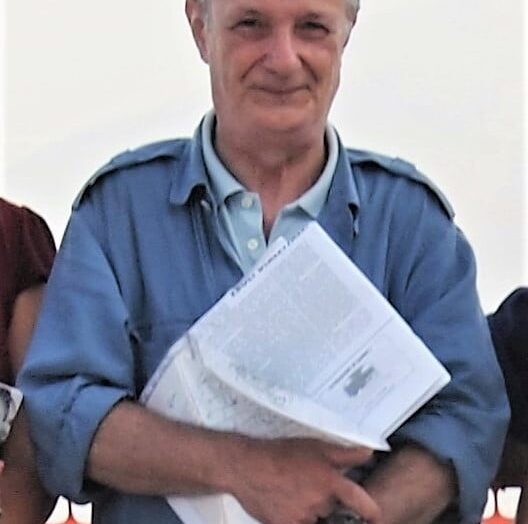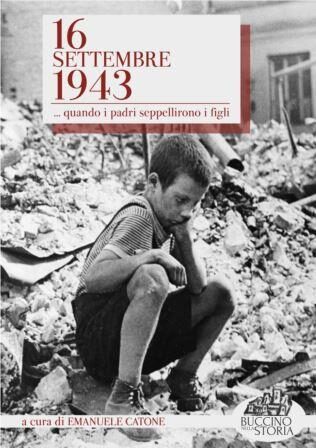Beniamino Mastursi (1902-1959), mayor of Buccino
On the 60th anniversary of death, 10 April 2019
The 10 April 1959 Mayor Beniamino Mastursi prematurely disappeared.
On the occasion of the 60th anniversary of his death, we thought it necessary to remember with this short note a character who left a strong mark on the twentieth-century history of the Buccino community*.
The family
There "Masturzo" family - this was the family's original surname - was not originally from Buccino, but it had its origins in the hamlet of Vignale di S. Cipriano Picentino, where's the 14 marzo 1827 Vincenzo Masturzo was born, son of "Landowner" Michele and his wife Natalizia Procida.
Vincenzo, «Leather seller» and «shopkeeper», was the first of his family to move to Buccino, where's the 23 February 1852 he married Rosa Lenzi, daughter of Paul, also a merchant («merciaio») and belonging to a family, original of Bagnoli Irpino, recently moved to Buccino, that the 15 April 1833 had married Lucia Pucciariello from Buccino.
Vincenzo, who would later die in Buccino the 28 novembre 1884 at the age of 56 years, and Rosa had several children. The firstborn was Raffaele, born just under a year after the wedding, followed by Francis Paul in 1854, Carlo the following year, Letizia in the 1858, Leopold in the 1859, Giuseppe Michele in the 1862, Giuseppe Gaetano in the 1863, Michele in 1865, Errico in the 1868, Lucia in 1870, Enrico Nicola (died at one year) and Adelina in the 1874.
Michele, Born on 23 January 1865, the 26 settembre 1895 he married the gentleman Ermelinda Fuccia – Born on 12 February 1864 by the owner Don Nicola Fuccia and his wife Teresa Pugliese – who gave him two daughters - Rosa, born in 1896, and Teresina, born in 1898 - and two children, Giuseppe, born in 1900, and Benjamin, who was born a few days before his brother's untimely death, died on 14 marzo 1902 at the age of about two years.
Beniamino Mastursi was born in fact at 23.20 of the 6 marzo 1902 in the paternal house in Via Piazza. The first name, unrelated to family tradition, he was given to honor the friendship that tied the family to Beniamino Spirito, the lawyer from San Mango Piemonte who starting from 1883 he was a deputy on several occasions, before, and senator, then, for the electoral college of Campagna.
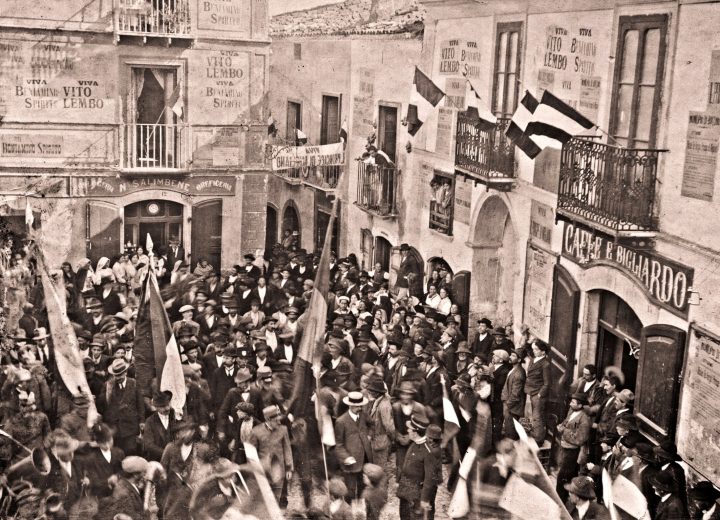
Rally in the square in the election campaign that saw Beniamino Spirito opposed to Vito Lembo (Vintage photo)
The 26 settembre 1925 he married Maria Fasano, daughter of Theodore, notary of Colliano, and Rosa Chiariello, of an important Buccinese family. Beniamino Mastursi's mother-in-law, indeed, she was the daughter of Dr. Alfonso Chiariello and his brothers were Luigi, then magistrate, and Giuseppe Antonio, who was a doctor for a long time in Buccino starting from the 1930s.
Five children were born from the marriage: Michele, Linda, Fernando, Bruno and Renato.
Studies and the legal profession
Like many of his generation, he conducted his first studies at the school of Don Antonio Grieco, parish priest of S. Giovanni Gerosolimitano for many years, to which - as we have already reported in our previous contribution - in the 60s, precisely for his long work as a talented educator, it was decided to name the newly established State Middle School (we note with disappointment that the marble plaque placed at the entrance to the school was shattered and it would be necessary to replace it in its place). To the teachings of Don Grieco, Beniamino Mastursi owed his excellent oratory, which would then have been very useful to him both in his professional experience and in his future political activity.
Beniamino Mastursi graduated as an accountant and in the early 1930s obtained the appointment of "legal sponsor" from the Court of Salerno, which allowed to practice the forensic profession before the Magistrates' Court and the Conciliation Offices. His skill and strong intuition allowed him to win over a large number of customers throughout the mandate of the Pretura di Buccino (which then included Buccino, also the municipalities of S. Gregory the Great, Palomonte, Ricigliano and Romagnano al Monte). His referents at the superior judicial offices were above all two prominent lawyers of the Salerno court: the criminal lawyer Camillo de Felice and the civilian Arturo Cirone. Appreciation, both personal and professional, it was also shown to him several times by the praetors who over the years managed the Buccinese office. The praetor Armando Olivares also expressed himself in this sense, who wanted to commemorate his figure in the criminal hearing of 10 April 1959, the first following his death.

Politics
The Mastursi family was engaged in Buccinese political life at least since September 1874, date on which Vincenzo, Benjamin's grandfather, it is documented as a member of the municipal council. Michael also had the same assignment, Vincenzo's son and Beniamino's father, who was also a councilor and city councilor for several years.
In the provincial context, the Mastursi family became politically linked to the Spirito brothers - the previously named Beniamino and his brother Francesco, also a lawyer and then a deputy -, it's at Giovanni Amendola, who remained a constant political reference point of the family even in the saddest moments of the fascist persecution against him.
A there is a precious memory of the relationship between the Mastursi and Mr Amendola provided by Beniamino Mastursi himself in an article of his that appeared in “Mattino of Italy "on 7 April 1951. The article reveals that the ties to Amendola they dated back to the beginning of the political commitment of the Sarnese journalist: Beniamino Mastursi says he met Amendola in Salerno in 1919 in Caffè Salvi disappeared when «the great parliamentarian sealed with my father an affectionate friendship, remained intact for many years ». In the countryside election of the 1919 Amendola also gave an acclaimed rally in Buccino, where is it he would come back, as a deputy and guest of the Mastursi family, in July 1920 on the occasion of the patronal feast. The honorable stayed in Buccino for a few day and "he was impressed - still remembers Beniamino Mastursi - of the vast quantities of faithful who followed the Image, of showy offers, and of the many large candles supported by the population, that preceded the statue, And piedi offers », so much so that in the following years he returned to Buccino several times in occasion of the party. Mr, reelected in the elections of 1921 is subsequently appointed Minister of Colonies in Facta governments, it was again guest of the Mastursi in Buccino the following year, getting from Buccinesi a festive welcome, as mentioned by Mastursi. Amendola, before the vile fascist aggression suffered in Montecatini forced her to move to France for the necessary medical treatment, would be returned to Buccino one last time in September 1923 for a sad family affair: in fact the 23 September of that year died prematurely in Buccino his young granddaughter Anna Maria, brother's daughter, how would then also remembered Giorgio Amendola in his autobiography. Even in his last, terrible moments Giovanni Amendola remembered his friends and Buccinese supporters: the 23 settembre 1925 from Vichy he sent to Beniamino Mastursi an affectionate greeting card, still jealously guarded by the heirs, on the occasion of his wedding that saw the union of the gods Mastasti with the Fasano, also supporters of Amendola in the upper area Sele.
The affectionate relationship with Amendola, after his tragic death in Cannes on 7 April 1926, it also extended to his sons Giorgio and Pietro, who several times were guests of the Mastursi in Buccino before and after the death of their father. Giorgio Amendola in his autobiography recalls his happy stay in Buccino in the summer 1923, when his father sent him away from Rome to avoid possible attacks or intimidation by the fascists. We report here a large excerpt, useful to recall the Buccinese environment of those years (G. Amendola, A lifestyle choice, Milano 1976, pp. 76-77):
I spent the summer of 1923 between the Palmieri of Sarno and the Masturzi of Buccino. Guest of the Masturzi was also uncle Mario with his family. As usual, lovely weeks. In the morning I followed the others on the hunt, especially worrying about eating fruit. In Buccino I went with a jovial priest to the bottom of the valley to bathe in the cold and clear waters of the White River, a tributary of the Heat. The good priest prepared bombs that he threw into the river, after building stone barriers. The loot of fish was always very rich. Then there were no worries or ecology, because the waters were very pure, nor of conservation of the species, because the fish could have been caught with their hands.
After the rich and heavy lunch, and the long siesta, we dragged the evening sitting on the chairs of the club, where gentlemen and gentlemen never tired of gossiping, while some were busy long, and often ruinous, you play poker.Sad, empty and arid the life of these bourgeois who returned every day to the happy years of university […]. The best were drawn to the professions, of the judiciary, university, and many managed to make a career. But most were forced to stay. Graduated in law or medicine, it was rare for someone to reopen a book.
I who boasted of Roman literary battles did not find listeners capable of understanding the difference between Luigi Pirandello and Marco Praga. The only known poet (named), admired and exalted, it was D’Annunzio. there were, Luckily, the blocks, educated, O, at least, instructed. The good priest had a rich library. Among the many books on philosophy and theology, I also found Guerrazzi's novels there, del D’Azeglio, of Cantù, that I read on that occasion, and even a translation of the Miserables, that I had already read and that I will never tire of rereading.
subsequently, the different political positions taken by Giorgio and Pietro Amendola, become leading exponents of the Italian Communist Party (PCI), compared to liberal family tradition, they did not alter the friendship relations with the Mastursi family. Pietro, who was long secretary of the PCI in the province of Salerno, on the occasion of the various rallies held in Buccino in the various campaigns election, he always stopped by the Mastursi studio, in the square that in the immediate post-war period the municipal administration wanted to name to the memory of the father.
Intense Beniamino Mastursi's relations with Giorgio Amendola were also. Just for their friendship and common anti-fascist faith, despite the different ones political beliefs Mastursi supported Amendola in the elections for the Assembly Constituent of the 2 June 1946, in which the PCI obtained Buccino 175 voti (the 6,54%).
Indicative of this friendship was the fact that in 1946 on the occasion of the occupation peasant woman of the lands of Commander Agnetti, when the occupants, including the lawyer from Salerno Giuseppe Lanocita was also noted, were drawn to criminal judgment at the Pretura di Buccino, the Communist Mr Guido Martuscelli, presumably on the advice of Giorgio Amendola, he entrusted it defense to Beniamino Mastursi.
Masturbating during the war was one of the protagonists of the most tragic and dangerous episode for the Buccinese community, until then only lapped by the tragedies of war. Indeed, when the 15 settembre 1943 a German column arrived in Buccino that went from Calabria to Naples and the Nazis demanded from the population the delivery of a large quantity of meat and other provisions, necessary for their sustenance and that of the prisoners they had with them, under the threat of bombing the country, it was precisely Mastursi together with his cousins Fuccia - apparently by order of the marshal of the Carabinieri - to work to avoid the Nazi retaliation and to organize the recovery of what was requested by the military from the various owners of cattle in the country. Luckily, for the needs induced by the evolution of events, the Germans were forced to abandon Buccino during the night and then the collected food was then sold to the population. Unfortunately - as I have told who and mine Quando i padri seppellirono i figli - the 16 September, however, the country had to suffer a tragic bombing, however, carried out by the British bombers precisely to eliminate that German column that arrived in Buccino and already fled, which led to death, immediate or for injuries sustained, of 45 people, half of which were children.

Beniamino Mastursi in the election campaign of 1956
Beniamino Mastursi was municipal councilor in the first post-war junta, established on 4 settembre 1945 under the guidance of the mayor Giovanni Cocozziello, in which all the representatives of the anti-fascist parties existing in Buccino entered with the promise of "maximum collaboration - according to the resolution of the settlement - for the performance of all the practices that affect the good of the population, hoping that the work agrees, effective, wise and disinterested of all, complete agreement is reached among the population ». The feeling of reconciliation didn't last long since Mastursi, representative of the Action Party, together with the commissioners representing the DC (he prof. Gerardo Raffaele Zitarosa), the PCI (Nicola Landolfi) and the Liberal Party (Nicola Muccione), he resigned a few months later, despite the support received from the Prefect who invited him to desist from his purpose, for disagreements with the mayor on some issues. In the late 1940s, the Prefect then assigned him as Prefect Commissioner in the nearby Municipality of Salvitelle.
Starting from the political elections in April 1948 militantly convinced in the ranks of the Christian Democrats (DC). He was elected mayor of Buccino for the first time in the elections of 1952, to which he had to present himself, But, with a civic list, "Flag", since the Provincial Directorate of the DC, under pressure from local people, he had denied him the possibility of using the party symbol, which was assigned to the list led by the commendatore Giovanni Cocozziello, outgoing mayor. With him, Giuseppe Candela was elected as director on the "The Flag" list, dr. Vincenzo Caprio, dr. Giuseppe Caravoglia, the lawyer. Bonaventura D’Acunto, Raffaele D’Acunto, dr. Luciano D’Agostino, dr. Vincenzo Fuccia, Raffaele Landolfi, Emilio Magaldi, Francesco Mangini, Antonio Marottoli, Francesco Sacco, Francescantonio Salimbene, Michele Salimbene e Nicola Salimbene.
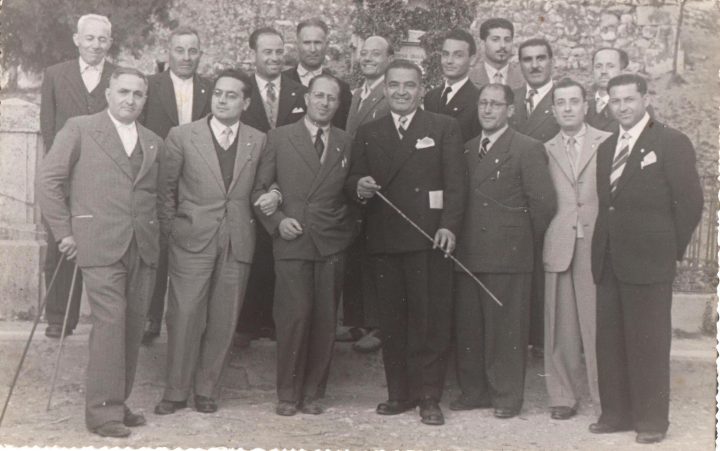
1952 – The directors on the list “Flag”
In 1956 he applied again for the renewal of the municipal council of Buccino, this time with the DC symbol inserted in the flag. The directors Candela were re-elected with him, Caravoglia, D’Acunto (Bonaventura and Raffaele), Weather in Fuccia, Magaldi, Mangini, Salimbene (Francescantonio and Michele), to which were added Giuseppe Calella, Giovanni Li Santi, Onofrio Ernesto Mazzillo, Ermiliano Salimbene and the teachers Vincenzo Grieco and Carlo Sacco.

1956 – The directors on the list “Flag” to their establishment
Beniamino Mastursi was unable to complete the second term because some majority councilors agreed with the opposition councilors (elected in the competing list called "La Tromba") and composed a new junta, who elected Dr. Vincenzo Fuccia mayor. Apparently the reasons for this political operation were related to the failure to suppress the post of Health Officer in the Municipality of Buccino, and therefore to the failure to place Dr. Vincenzo Cocozziello at rest, requested by doctors and one of the midwives in the country, for which the Mastursi administration had deliberated on the matter and had started the relative procedure, which had led to the prefectural decree of suppression of the post of Health Officer, but it was subsequently revoked following court decisions.
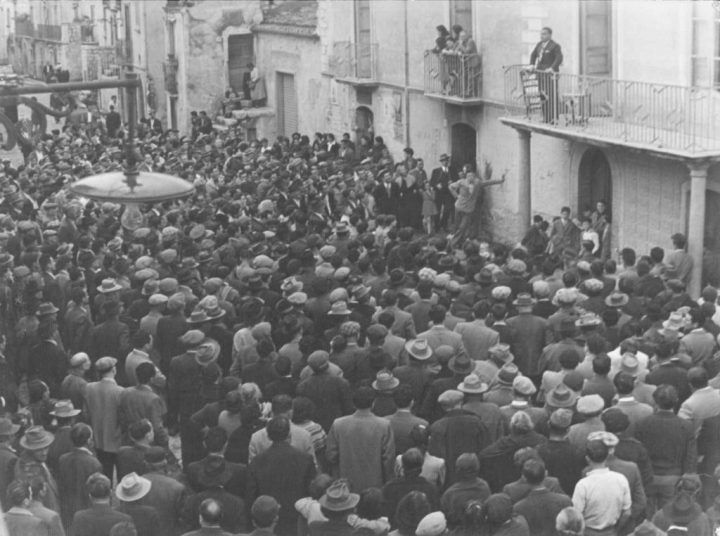
1956 – B rally. Masturbate in Corso Garibaldi from the balcony of the Verderese house (Mastursi family archive)
The two Mastursi councils managed to achieve important results in their administrative activity. All of this was primarily due to Mastursi's ability to use all his political ties and friendships, numerous in Salerno and Naples, for the solution of the problems that Buccino, like most of the small southern municipalities of the inland areas, he lived after the Second World War.
The active collaboration of some political authorities and other personalities allowed, indeed, the junta Mastursi to carry out some important modernization works in the country, to which the memory of the Buccinesi for his figure is still linked. The relationships that Mastursi had with the honorable Amodio were lasting and fruitful, Iervolino, From Martino, Sullo and Indelli. Even the honorable Giorgio Amendola, in the meantime he became Undersecretary to the Prime Minister, in the name of his ancient emotional bond with Buccino and his ancient friendship with Mastursi, he did not fail his help to the Buccinese junta, particularly interested in obtaining financing for the remediation of "municipal plans", for the construction of the first public housing and for the construction of the school building in via Pescara, at the Borgo.
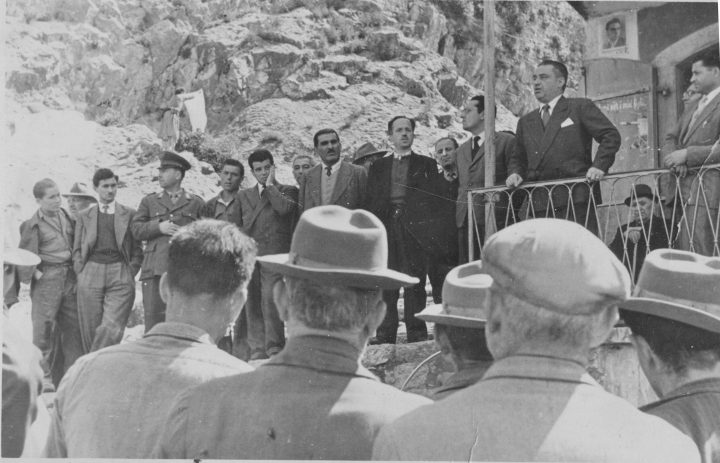
11 May 1954 – Inauguration of a building site at the Casale
The engineer's commitment to Buccino was also remarkable Stefano Brun, Buccino as a mother and remained affectionately tied to Buccino throughout his life, to which out of gratitude the junta Mastursi il 21 April 1954 conferred the Honorary Citizenship of Buccino. Both the correspondence between the mayor and the engineer Brun, preserved by the heirs, and the reasons behind the honorific concession - from which we quote - testify to his direct commitment to various issues, including the restoration of the Palazzo degli Uffici, the «reconstruction of the vault of the church of S. Maria, the inclusion of Buccino among mountain countries, the commitment of the Cassa del Mezzogiorno to revise the water network of the consortium aqueduct […], the successful start of the practice relating to the construction of the Buccino-Caprignola-Scalo Sicignano rolling stock and the grandiose “Alta Valle del Sele” aqueduct […] the inclusion of our maternity home for the needy under the High Patronage of the Sovereign Military Order of Malta ". In health matters Mastursi did not fail to avail himself of the cousin's valid collaboration, he prof. Alfonso Giovanni Chiariello, director of the Pilgrims Hospital of Naples and then from 1968 Senator of the Republic.
All this allowed Mastursi to carry out important interventions that undeniably contributed to the improvement of the country. We remember the main ones.
The 22 April 1956, thanks to the funding of the Public Works Department, the transformation of the former Augustinian convent of S. was completed. Antonio in the Palazzo degli Uffici, where they found the Municipality, the District Court, the Tax Office, the Registry Office and the Didactic Department.

22 April 1956 – Inauguration of the Palazzo degli Uffici

22 April 1956 – Inauguration of the Palazzo degli Uffici
Of primary importance was the establishment of the State Middle School, tenaciously desired by the administration as a fundamental tool for greater education and better cultural level for the Buccinese community, and obtained thanks to the decisive interest of the honorable Maria Iervolino, at the time Undersecretary of Education, who was repeatedly present in Buccino in those years. L’on. Iervolino was also among the authorities present at the inauguration of the renovated building for primary schools in the Borgo, occurred on the same day as that of the Palazzo degli Uffici. School meals were always kept active for both elementary and kindergarten schools.

22 April 1956 – Inauguration of the primary school in via Pescara
The layout of Piazza Mercato was carried out - which in the immediate post-war period had been deservedly dedicated to the memory of the honorable socialist Giacomo Matteotti - and of the cemetery and were finally paved, thanks to the financial support of the Province, some main sections of urban roads (via Casale, long municipality, square S. Vito, corso Vittorio Emanuele, Corso Garibaldi, Pescara wide, via Pescara). Thanks to the use of the "School Yards" and "Winter Rescue" funded by the Prefecture, the administration managed to guarantee road maintenance both on internal roads in the country (Porta Consina, S. Elia, Fork, Holy spirit, Largo S. Rina, Egypt, Conceria, S. Antonio, S. Croce, S. Maria, Annunziata, etc.) both to the main rural roads (Cane, Eliceto, Bisciglieto, Petrosa, Fountain the Earth, etc.).
Yes carried out an expansion of public lighting, which was also extended to street "Under the clock", and the sewer network, which integrated even the most areas outlying areas (for example via Piano and via Pistilli).
As for services, the Post Office was established in Tufariello and the SITA scheduled bus service was extended to Piazza IV Novembre.
Between the initiatives of the Mastursi junta also remember a 'promotional' one for copper processing, the main activity of local crafts, then still thriving. For a period, indeed, at the invitation of the administration Buccinese the Salerno Tourist and Tourism Company had the habit of reward the winners of the prestigious horse show in Salerno with objects in copper made by the artisans of Buccino, such as Onofrio (Ninnillo) Via and i Amendola brothers.
Recall, finally, a singular initiative by Mayor Mastursi who, precursor of the current "School-Work Alternation", during his tenure he allowed some young high school students to attend, during summer holidays, the municipal offices to become familiar with a environment where intellectual work took place, receiving as a gift in the end of this sort of stage a book with dedication of the Mayor.
How say, Beniamino Mastursi disappeared prematurely on 10 April 1959, at the age of 57 years. The participation in his funeral was vast and moved, also from part of citizens of neighboring countries.
This it was primarily the consequence of the deceased's personality and behavior mayor. They remember it, indeed, the elegance of the traits, affability in ways, his elegance and respect for people, and its popularity with the population, especially in the peasant world.
We remember a particular affection for children. Several times for the less fortunate on the day of the Epiphany, assisted by the Sisters who then held the Kindergarten in via Quintino Di Vona and some friends, among which we remember in particular Miss Ida Mele and Michele Salimbene (Michelin r’Amelia), organized a lunch (not at the expense of the municipality)
at kindergarten, often cheering the convivial meeting also with some of his played on the piano.
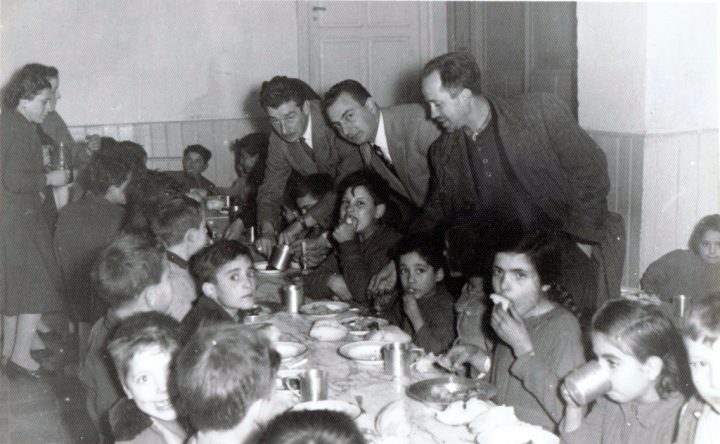
1952 – Epiphany lunch

1952 – Epiphany lunch
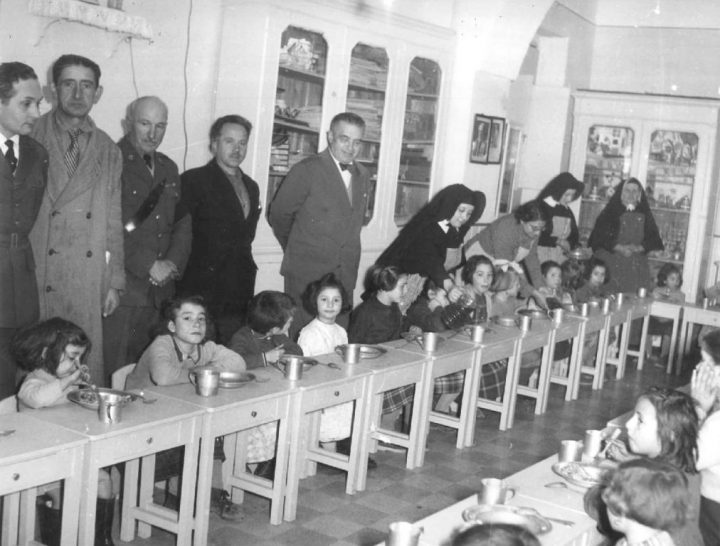
1952 – Epiphany lunch
(Mastursi family archive)

1952 – B. Masturbate on the piano during the Epiphany lunch
(Mastursi family archive)
Despite the bitterness that inevitably marks the political struggle, Moreover, he always had good relations, most of the time friendly, with his political opponents and he was, generally reciprocated.
Yet today his memory is very vivid in the Buccinesi who got to know him and there hope that the new generations too, who have lived in periods of Buccinese administrative life, may be intrigued by it through the news contained in this short note, composed just with this purpose.
We take, finally, the occasion of this note and the anniversary of his departure to propose to the current Municipal Administration to name a road for Beniamino Mastursi, maybe in the historic center, dove certain, as has been done in recent years for other illustrious personalities from the Buccinese history. The town toponymy, indeed, it represents a fundamental tool for renewing the memory of our community in the present and in the future, through its protagonists. Beniamino Mastursi, and with him many other illustrious Buccinesi, for what it has represented in the history of our community it certainly deserves it.
* I sincerely thank the lawyer Fernando Mastursi for his availability and for the information, the documents and family photos that he generously wanted to put at my disposal for the preparation of these notes, which anticipate my future broader work on the fascist period and the post-war period in Buccino. I owe the other photos, made available through the photographic archive "Buccino nella Storia", to the generosity of Miss Amelia Salimbene, that I thank.
EMANUELE CATONE

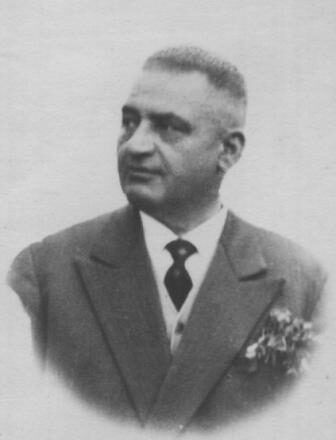
![Le Cuccive di S. Lucia (13 December) [Buccinese traditions, 2]](http://buccinonellastoria.altervista.org/Sito/wp-content/uploads/2019/12/le-cuccive-570x524.png)
